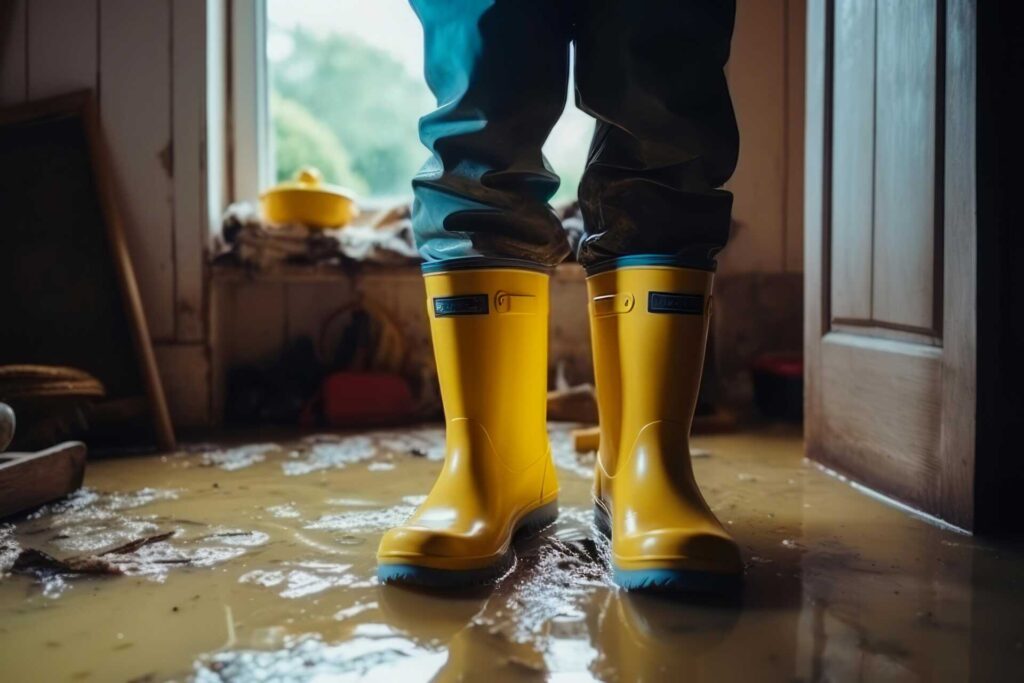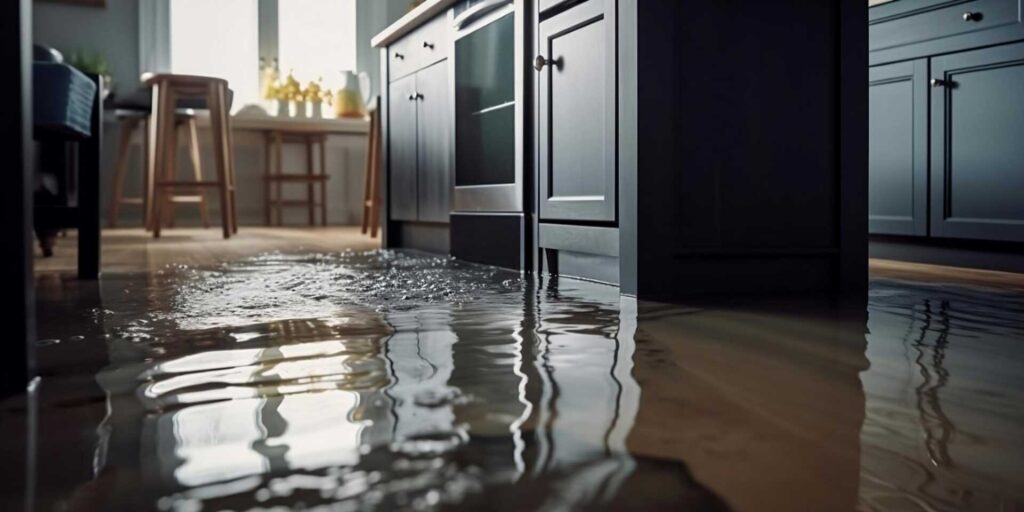Contents
When patching drywall, you want a spackling that resists shrinking, cracking, and impact while forming a strong bond. But which one is the best fit for your needs? Factors like ease of application, sanding, and paintability play vital roles in achieving a flawless finish. So, what key features should you look for in the best spackling for your drywall repairs? Let’s explore the options and techniques to help you achieve professional results effortlessly.
Key Takeaways
- Choose to spackle with minimal shrinking and to crack for durable repairs.
- Opt for a compound that bonds well to drywall surfaces.
- Select a product that sands easily for smooth finishes.
- Look for spackling that allows for seamless paint application.
- Prioritize ease of use and minimal touch-ups when selecting spackling.
Types of Spackling Compounds
When selecting the best spackling for patching drywall, it’s important to consider the different types of spackling compounds available on the market. Understanding the nuances of these compounds can greatly impact the outcome of your drywall repair project.
Let’s start with surface preparation. Before applying any spackling compound, make sure the area is clean and free of dust and debris. Use a putty knife to scrape away any loose bits of drywall and create a smooth surface for the spackling to adhere to.
Next, let’s talk about the application tools. Depending on the type of spackling compound you choose, you may need different tools for application. Lightweight spackling compounds are often easy to apply with just a putty knife, while heavier compounds may require a trowel for a smooth finish.
After applying the spackling compound, it’s important to focus on drying techniques. Allow the compound to dry completely according to the manufacturer’s instructions before sanding or painting. Proper drying ensures a durable and long-lasting repair.
Lastly, don’t forget about the finishing touches. Once the spackling is dry, carefully sand the repaired area to blend it seamlessly with the surrounding wall. Take your time with this step to achieve a professional-looking finish that will make the patched area virtually invisible.
Factors to Consider When Choosing
When selecting spackling for your drywall patching needs, it’s important to take into account factors like durability, ease of application, and drying time.
Evaluating the durability of the spackling compound ensures a long-lasting repair; choosing one with a simple application process can save you time and effort.
Additionally, analyzing the drying time is vital to determine how quickly you can move on to the next steps of your project.
Spackling Durability Factors
Consider the durability of spackling when selecting the best product for patching drywall. Vital factors play a key role in ensuring the longevity and quality of your wall repairs.
When choosing to spackle for drywall patches, focus on aspects such as the product’s resistance to shrinking, cracking, and impact. Look for spackling compounds that provide a strong bond to the drywall surface, preventing future cracks or crumbling.
Application techniques also contribute to the overall robustness of the spackling. Make sure to follow the manufacturer’s instructions carefully when applying the product. Properly preparing the surface, applying the spackling in thin layers, and allowing sufficient drying time between coats can greatly enhance the durability of the patch.
Another aspect to consider is the flexibility of the spackling once it has dried. Select a product that remains pliable after drying to accommodate any slight movements in the drywall, reducing the risk of cracks reappearing over time.
Application Ease Considerations
To ensure a smooth and efficient application process, prioritize factors that contribute to the ease of using spackling products for patching drywall. Consider the sanding techniques required when choosing a spackling product. Opt for a spackling compound that sands easily without clogging up sandpaper, ensuring a flawless finish.
Additionally, think about the paint finish that will be applied over the patched area. Some spackling products may affect the final paint appearance, so choose one that allows for a consistent paint finish.
When faced with patching challenges on your drywall, select a spackling compound that’s easy to work with and molds well into different shapes. This will help you achieve a smooth and even surface, reducing the need for extensive sanding and touch-ups.
Drying Time Analysis
Choose a spackling product with a quick drying time to expedite the patching process and allow for efficient progress on your drywall repairs. When considering drying time, look for spackling compounds that dry rapidly, typically within 30 minutes to 1 hour. Quick-drying spackling is important as it enables you to move swiftly through the repair stages, minimizing downtime and allowing for multiple layers to be applied in a single day. This is particularly beneficial when working on time-sensitive projects or needing to complete repairs promptly.
When using a quick-dry spackling product, it’s essential to be prepared for rapid sanding. Make sure you have your sanding tools ready and nearby as the compound dries quickly. Quick-drying spackling may require immediate sanding after application to achieve a smooth finish.
Additionally, familiarize yourself with different sanding techniques, such as using fine-grit sandpaper or sanding blocks to achieve the desired surface texture efficiently. By selecting a spackling compound with a quick drying time and mastering effective sanding techniques, you can streamline your drywall repair process and achieve professional results in less time.
Application Techniques for Smooth Finish
To achieve a smooth finish when spackling drywall, make sure that your application technique involves feathering out the edges of the patch to blend harmoniously with the surrounding wall surface. This process ensures that the repaired area seamlessly integrates with the rest of the wall, creating a flawless appearance.
Here are some tips to help you achieve a professional finish:
Apply spackling compound in thin layers: Building up the patch with multiple thin layers rather than one thick layer will result in a smoother and more even finish.
Use a clean putty knife: A clean putty knife helps you spread the spackling compound evenly and smoothly, preventing any bumps or ridges in the patched area.
Feather out the edges: Blend the edges of the patch by gently feathering out the spackling compound towards the surrounding wall, ensuring a smooth shift.
Sand lightly between layers: Lightly sanding each layer of spackling compound before applying the next one helps create a uniform surface and a smoother finish.
Inspect for imperfections: Regularly check your work for any imperfections or uneven areas. Addressing these issues promptly will result in a more polished end result.
Drying Time and Sanding Tips
For optimal results, make sure that the spackling compound has fully dried before proceeding to sand the patched area for a smooth finish. Quick-drying spackling compounds typically take around 30 minutes to 1 hour to dry completely, but it’s advisable to wait longer to ensure thorough drying. To check if the spackling is dry, gently touch the surface – if it feels firm and no longer cold to the touch, it’s likely ready for sanding.
When it comes to sanding techniques, use fine-grit sandpaper (around 120 to 150 grit) for the best results. Sand in a circular motion around the patched area, gradually expanding the sanding outward to blend the edges seamlessly with the surrounding drywall. Avoid applying excessive pressure while sanding to prevent creating uneven surfaces or damaging the spackling.
To achieve a smooth finish, consider lightly dampening a clean cloth and wiping down the sanded area to remove any dust particles. This step helps prepare the surface for painting or further finishing.
Additionally, if you notice any unevenness after sanding, apply a thin layer of spackling over the area and repeat the drying and sanding process for a flawless result.
Handling Shrinkage and Cracks
When addressing shrinkage and cracks in your drywall patches, make sure to use proper application techniques to prevent shrinkage.
Utilize mesh tape or paper tape for crack repair, following up with multiple thin layers of spackling for a smooth finish.
Be attentive to the drying time between layers to allow for proper adhesion and minimize the risk of future cracks.
Shrinkage Prevention Techniques
Proactively address shrinkage and cracks by applying a thin layer of high-quality spackling compound to the patched drywall surface. To prevent shrinkage and cracks effectively, consider the following techniques:
Apply Primer: Before spackling, prime the patched area to create a smooth surface and improve adhesion.
Use Setting Compound: Opt for setting compound over drying-type spackling as it reduces shrinkage due to its chemical hardening process.
Avoid Over-sanding: Excessive sanding can weaken the spackling compound, leading to cracks; sand lightly to maintain integrity.
Monitor Humidity Levels: Fluctuations in humidity can impact drying times and result in shrinkage, so maintain a consistent environment.
Apply Multiple Thin Layers: Instead of one thick layer, apply several thin layers of spackling, allowing each to dry completely to prevent shrinkage and cracking.
Following these techniques diligently will help you achieve a flawless finish while minimizing the risk of shrinkage and cracks in your patched drywall.
Crack Repair Methods
To effectively address shrinkage and cracks in your drywall, implement proven crack repair methods that prioritize long-lasting results. When tackling crack repair, start by evaluating the extent of the damage.
For small cracks, consider using spackling paste or joint compound. These materials are ideal for filling in minor imperfections and creating a smooth surface for painting. However, for larger cracks, mesh tape combined with setting-type joint compounds provides added strength and durability.
To ensure a smooth finish, apply the patching techniques in thin layers, allowing each coat to dry completely before adding the next. This helps prevent cracking and ensures a strong repair. Additionally, consider using fiberglass mesh tape for added reinforcement in high-stress areas prone to cracking.
When choosing material options for crack repair, prioritize products specifically designed for drywall repairs. These materials offer better adhesion and flexibility, resulting in a long-lasting solution.
Paintability and Final Touches
For a professional, smooth finish, make sure that the spackling compound has dried completely before sanding and applying primer. Once the surface is dry, follow these steps to ensure your final touches are flawless:
Inspect the Surface: Before painting, carefully examine the patched area to verify it’s smooth and level. Any imperfections should be addressed before proceeding.
Sand Smoothly: Use fine-grit sandpaper to sand the patched area gently. This step is vital for achieving a harmonious blend between the patch and the surrounding wall.
Apply Primer: To promote paint adhesion and create a uniform surface, apply a high-quality primer to the patched area. This will also help the paint color match the rest of the wall.
Use Proper Finishing Techniques: When painting over the patched area, use consistent strokes and ensure even coverage. This will help blend the patch with the rest of the wall for a cohesive look.
Check Color Matching: Once the paint has dried, double-check the color matching under different lighting conditions. Make any necessary touch-ups to achieve a smooth finish that blends in perfectly.
Best Practices for Long-lasting Results
To secure your drywall patches stand the test of time, prioritize proper preparation techniques and material selection. Avoid common patching mistakes such as rushing the process or using low-quality spackling compounds.
Before starting, confirm the damaged area is clean, dry, and free of loose debris. Use a putty knife to remove any loose particles and create a smooth surface for patching.
When selecting a spackling product, opt for a high-quality, paintable compound that adheres well to drywall. Consider lightweight spackling for smaller repairs and joint compound for larger patches. Follow the manufacturer’s instructions for mixing and applying the spackling to achieve a smooth finish.
After patching, allow sufficient time for the compound to dry completely before sanding. Use fine-grit sandpaper to polish the patched area and blend it with the surrounding wall. Wipe away dust with a damp cloth to ensure a clean surface for painting.
For long-lasting results, consider applying a primer before painting to help the patch blend in harmoniously with the rest of the wall. Additionally, maintenance tips such as addressing any new cracks or holes promptly should be implemented to prevent further damage.
Review
When it comes to patching drywall, the best spackling compound is like a reliable friend – strong, flexible, and always there when you need it.
By taking into account factors such as resistance to shrinking, ease of application, and compatibility with paint, you can ensure a smooth and long-lasting repair.
Remember, a little attention to detail and the right product can make all the difference in achieving a polished and flawless finish.




